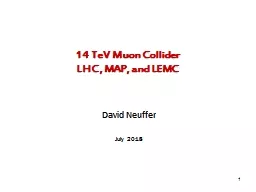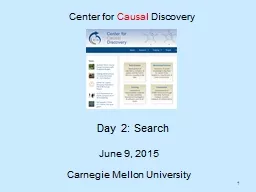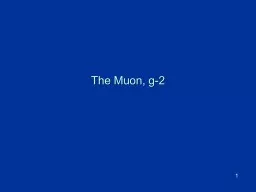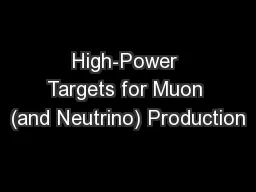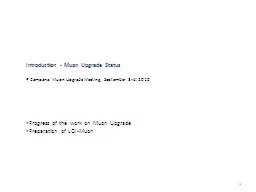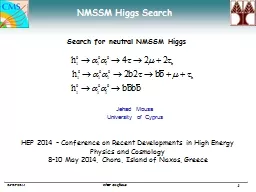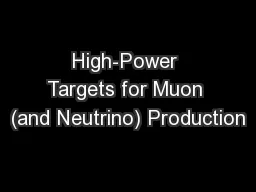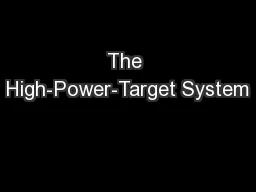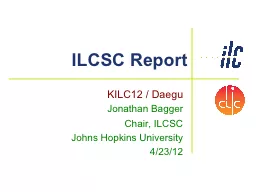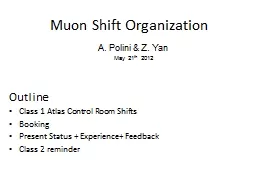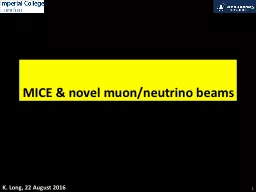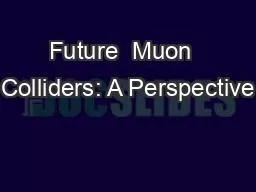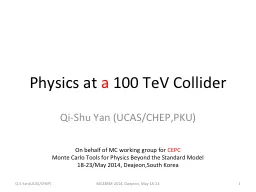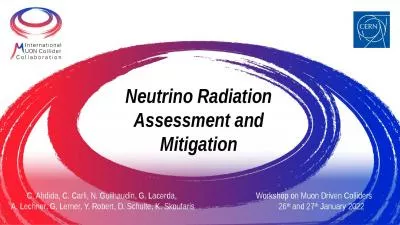PPT-1 14 TeV Muon Collider
Author : araquant | Published Date : 2020-10-22
LHC MAP and LEMC David Neuffer July 2018 2 Outline Next Heavy Lepton Collider up to 14 TeV in LHC tunnel Needs muon source PS or new MW proton Linac storage
Presentation Embed Code
Download Presentation
Download Presentation The PPT/PDF document "1 14 TeV Muon Collider" is the property of its rightful owner. Permission is granted to download and print the materials on this website for personal, non-commercial use only, and to display it on your personal computer provided you do not modify the materials and that you retain all copyright notices contained in the materials. By downloading content from our website, you accept the terms of this agreement.
1 14 TeV Muon Collider: Transcript
Download Rules Of Document
"1 14 TeV Muon Collider"The content belongs to its owner. You may download and print it for personal use, without modification, and keep all copyright notices. By downloading, you agree to these terms.
Related Documents

